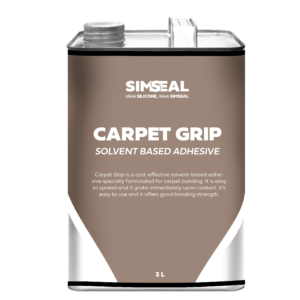Choose the best Silicone Adhesive Sealant Products.
Silicone adhesive sealant, often referred to simply as silicone sealant, is a type of adhesive material commonly used for creating durable and flexible seals. It is made from a synthetic polymer known as silicone, which offers a range of advantageous properties for sealing and bonding applications. Here are some key characteristics and common uses of silicone adhesive sealant:
Flexibility: Silicone sealants are highly flexible, which allows them to accommodate movement and expansion in the materials they bond. This flexibility is particularly useful in applications where there may be temperature variations or structural shifts.
Water and Weather Resistance: Silicone sealants are known for their excellent resistance to water, weather, and UV radiation. They are commonly used for sealing gaps and joints in outdoor and wet environments, such as in windows, doors, and plumbing.
High Temperature Resistance: Silicone sealants can withstand high temperatures, making them suitable for applications near heat sources like stoves, ovens, and engines. They are also used in the automotive and aerospace industries.
Chemical Resistance: They are generally resistant to many chemicals, making them a suitable choice for sealing or bonding in industrial settings where exposure to various substances is common.
Electrical Insulation: Silicone sealants can be used for electrical applications due to their insulating properties, and they are often used in the manufacturing and repair of electronic components.
Ease of Application: Silicone sealants come in various forms, including caulks, gels, and liquids. They are easy to apply using a caulking gun, squeeze tube, or other dispensing methods. They adhere well to various surfaces, including glass, metal, plastics, and ceramics.
Transparent and Aesthetic Options: Some silicone sealants are transparent or come in a range of colors, allowing for more aesthetically pleasing results when sealing or bonding glass, tile, or other visible materials.
Common uses for silicone adhesive sealant include:
Sealing gaps and joints in construction, such as around windows and doors.
Bonding glass and other materials in aquariums and terrariums.
Waterproofing and sealing in bathrooms, kitchens, and other wet areas.
Repairing and sealing automotive components, including gaskets and engine parts.
Sealing and insulating electrical connections.
Providing weatherproofing and durability in outdoor applications.
Creating flexible gaskets and seals in industrial machinery.
When using silicone sealant, it's important to follow the manufacturer's instructions for application and drying times. It typically cures by reacting with moisture in the air, so ensuring a dry and clean surface is essential for proper adhesion.

Comments
Post a Comment